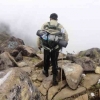What is The Rivers Study?
In the rivers study, students take a field trip to observe the point, the place where pittsburgh’ three rivers converge.
The rivers study is a second and third grade interdisciplinary curriculum unit thought by chimene brandt and other teacher at the McCleary School in Pittsburgh, Pennysylvania. The rivers study gives students the opportunity to learn about rivers using a “KWL” questioned based approach. That is, the study of rivers begins with tree broad questions:
·What do you already know about rivers?
In this brainstorming activity, the teacher encourages students to tell what they already know about rivers. The question serves as a pre assessment or diagnostic aide. That is, it helps the teacher to size up students’ initial information and understanding. A second purpose is to help the teacher to build a “work bank” of vocabulary pertaining to rivers. Third, it helps to prime, or activate, student’s thinking about rivers. Finally, it helps te teacher to dispel erroneous beliefs or ideas that students may voice about rivers.
·What do you want to know?
Through this question, the teacher learns what the students are interested in and can begin to bring together student’s interest with goals and standards held by the teacher and district. In the beginning of brainstorming for this question, the teacher accept any reasonable question that the student offer. After the initial brainstorming, the teacher and the class choose a few questions from among those that were offered. The questions that are selected help us to focus the class’s study, and build on student’s interests.
·How we will learn about the rivers?
During this brainstorming session, the teacher encourages students to devise approaches to answering the questions they have posed about rivers. The teacher, together with the students, then choose from this session a range of activities that allow students to learn about the topic. The chosen activities enable them to draw on many different intelligence and helps them develop knowledge and skills important to the topic and to the school district.
With Ms. Brandt’s facilitation, the students arrive at two central questions to explore for a period of three to four months:
·How do rivers begin?
·Where does the water come from?
The students explore these two questions and arrive at answers to them through a variety of activities that include visits to the rivers that are prominent part of Pittsburgh’s landscape. During these visits, students record their observations in words and drawing. Back in the classroom, they develop models of the landscape, read about rivers.
What Happens During The Rivers Study?
Students have multiple ways of showing what they know…
It’s not just, ‘look at this textbook and answer the questions. Read it and answer question.’
The kid have many ways of learning something.
-Chimene Brandt
Multiple Intelligences in This Unit
·The activities included in the rivers study allow students to draw on many different intelligences to acquire and demonstrate their knowledge of rivers.
·Different activities draw on different combinations of intelligences. For example, filed trip to the rivers tap students’ naturalist, spatial, and linguistic intelligences, group work on murals and three dimensional models engges students interpersonal, naturalist, spatial, and bodily kinesthetic intelligences.
Entry Points in This Unit
·The activities in the rivers study tap all of the entry points.
·The existential entry point is central to the questions the students and the teacher decided to pursue: How do rivers begin? Where does the water come from?
·The aesthetic, narrative, logical quantitative, and interpersonal entry points are prominent in many of the activities.
Narrative: students read stories about the rivers, they write about their class visits to the river, and they consider how the river influences their own and families’ live event.
Aesthetic: students create sketches and murals of the river. They study artworks in which rivers are depicted. They may also read and write poetry about rivers.
Logical-Quatitative: in the stream table activity (is a small scale model of a river system that makes observation of the natural processes of river formation easier to see), student generate and test hypotheses about what happens to rivers under various conditions. A more strictly quantitative entry point is involved when students work with the concept of ratios, scale, proportion, area, and perimeter in constructing block models (the students constructing the representations of Pittsburgh’s buildings, bridges, and rivers by using a block).
Experiential: students visit rivers to observe them firsthand and record their observations.
Existential: students consider how rivers form, where water for them comes from, and how rivers shape people’s live.
Interpersonal: students work together in various group activities, such as creating the river and country models, block constructions, and murals.
Compass Points Practices In This Unit
·The rivers study is good example of a unit in which the theory of multiple intelligences serves as a tool in the teaching of substantive areas: the theory is there, but not taught directly to the students.
·The arts are prominent throughout this classroom and in the McClearly Elementary School as a whole.
·Students have controlled but meaningful choices in the range of ways they can learn and respect their understanding.
Ling
Spt
Intr1
Intr2
Log-M
Msc
Ntr
Bod-K
ACTIVITIES
x








